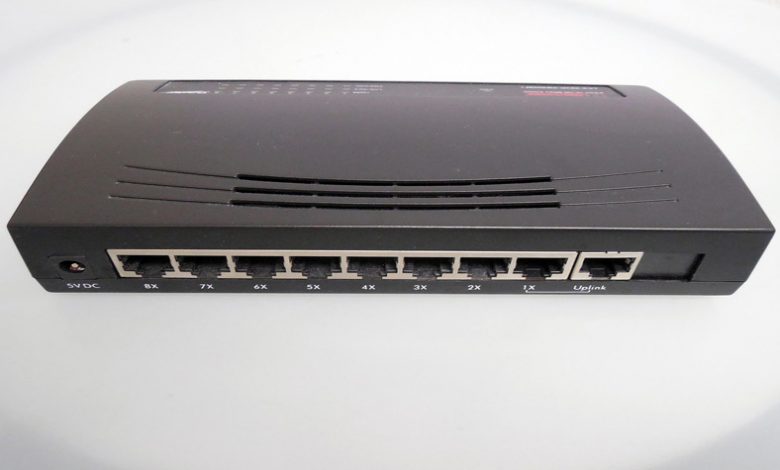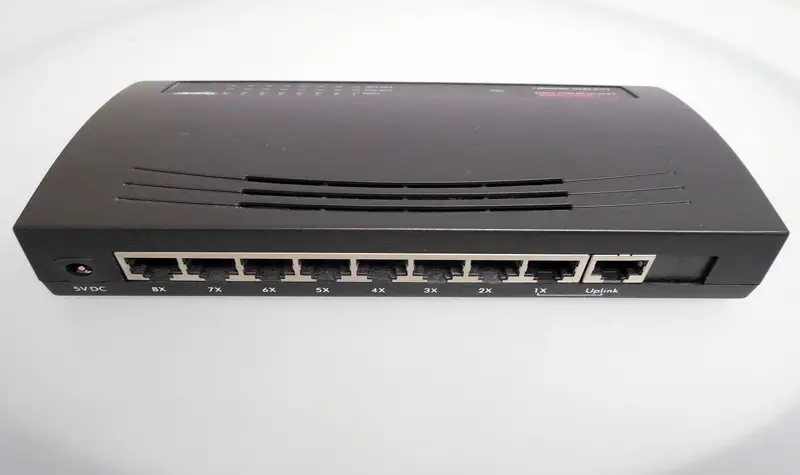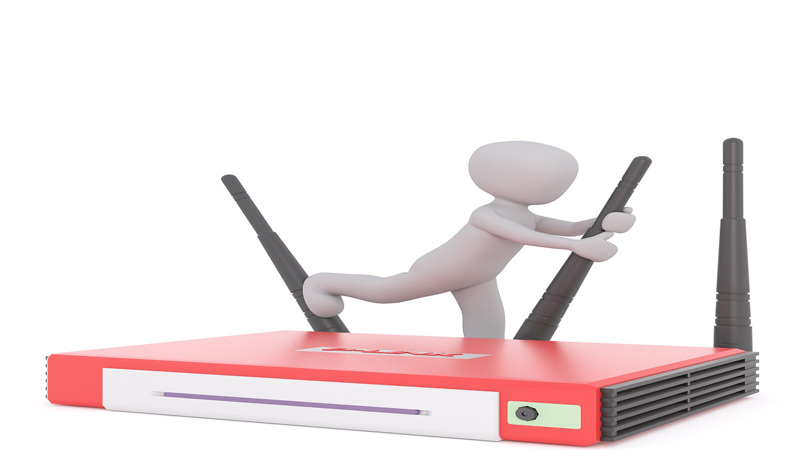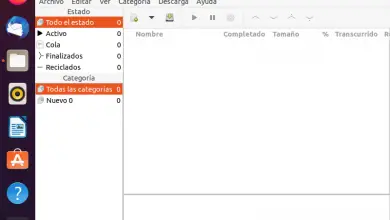How does WiFi work to provide wireless internet connection?

When our internet connection is interrupted constantly or at certain times it becomes slow, we do not realize it, but often times the problem is in our router because it may have the wrong frequency.
It usually happens that in large cities the internet speed is slower than in less densely populated areas. . This occurs due to the occupancy and overlap of the low frequency channels of the routing equipment.
Then we'll show you everything you need to know to have the best internet connection through a WiFi network . With this article, you will be able to know the difference between a router and a modem, as well as the influence of the frequency on the quality of the connection.
What is a WiFi router and what is it used for?

A WiFi router is an electronic device whose mission is to choose the best route to receive and send data by radio waves by choosing a network based on a criterion of administrative distance.
Thanks to this protocol or this set of routing rules, the hardware can connect two or more devices to each other and with this, it can get the most suitable route to effectively handle sending and receiving data.
That is, the routing device acts in two planes, one is a control plane with which it searches for the most efficient output of data, and the other is a forwarding plane, therefore the router is loaded. to receive this data. and send it to devices on another interface.
We do not have to confuse these two plans because retransmission consists of receiving a data packet and delivering it to the output indicated by a table , while the control plan is that it is the procedure of making this table.
Although it is true that the router has different uses, we will focus on the use of home or office internet distribution.
In this way, we can say that a WiFi router works as a wireless access door, that is, it is responsible for receiving the internet through the modem and then distributing the signal by radio waves between the various nodes or components of a wireless network. .
There are different types of routers, but the one most used today for homes is the mixed one, which has connections via cables and also wireless.
The speed of these devices is 2,4 GHz and 5 GHz, offering a connection speed of up to 70 Mbps to 1 Gbps respectively. We will detail this subject in the last part of our article.
Where does the internet from the router come from?

Many people are confused thinking that the router is the one giving the internet signal . This is not the case because the equipment in charge of this function is the modem, which receives the Internet from our operator via a cable which can be coaxial, ADSL or optical fiber.
In other words, what the router does is convert the signal coming from the modem and distribute that signal to the various devices that can be connected to it, while the modem is in charge of receiving the Internet.
In other words, the routing device receives and sends information by radio waves to our computer and at the same time receives instructions from our PC to encode them and send them to the server via an Ethernet cable.
After the server translates the requested data, it will send it back to our computer, but it will first have to go through the router that receives this information from the server through the Ethernet cable and it will have to translate the information from the server.
How does the router work to create a wireless internet signal?

We can say that the routing equipment is a translator and a mediator between a device, which is connected to the WiFi network and the server of the Internet page to which we want to access.
The operation of a router to create an Internet signal consists of the following steps:
Connection establishment and authentication
At this time, the devices in the wireless network connect and negotiate all the parameters to be bound via authentication protocols to identify the user.
Although authentication is not required, but it is recommended because rules are also used to establish the encrypted password to access the router.
Internet reception
The router is in communication with the modem, which is responsible for receiving the Internet signal via an Ethernet cable. At this point, the routing hardware encodes this data for later distribution.
Signal encoding protocol
Thanks to a pre-established protocol, the PPP (for its acronym in English "Point to Point Protocol" ) or « Point to point protocol » , encodes the information, compresses it and authenticates it.
"UPDATE ✅ Do you want to know how your router turns the internet into a wireless signal? ⭐ ENTER HERE ⭐ and find out all about it ✅ EASY and QUICK ✅ »
In this way, it is ready to deliver the data required by the different nodes of the wireless network.
Choose the best route
When it has the conditions to be able to disseminate the data, it begins to search for the best route, according to an administrative distance criterion, for the delivery of the package. That is to say, it seeks the efficiency between transmission and reception between the router and the device in charge of receiving the data.
Data packet delivery
Once the best route has been chosen, it delivers the data packets by radio waves to the computer or any device that has requested information from the Internet server.
Reverse path
Likewise, when an electronic device needs an Internet connection, it communicates with the router which, thanks to the set of routing rules, receives and sends the information, performing a work of translator and mediator between computer and server. the page.
What is the frequency of a WiFi signal and to what extent does it influence the quality of the connection?
The frequency of a WiFi signal is the speed at which data packets are transmitted and received , from port to port, between the different nodes of the wireless network. To control this transmission speed, there are different protocols so that, when followed, they can have greater efficiency.
There are currently two widely used frequency bands, both of which work with the 802.11 standards. These two bands are 2,4 GHz and 5 GHz. Where GHz is the unit of measurement that quantifies the period of oscillation in nanoseconds and Hz is equal to 10 raised to the ninth power, or 1 (one billion).
If we have to talk about 2,4 GHz, we can say that it is the modulated signal which reaches the receiving devices on the basis of 13 channels (plus 1 channel, which is the transfer center) of 22 MHz each. Being low frequency, its range is greater and its speed is around 50 Mbps to 70 Mbps .

The characteristic of these channels is that they are narrow and often overlap with other channels of the same frequency which are close to our router.
In this way, when many routers are operating in a nearby area, speed and internet connection become slow because many data packets are transmitted through the same channels. In this way we can say that the frequency of WiFi has a direct influence on the quality of the Internet connection .
It is also necessary to keep in mind that there are different electronic equipment close to the router , such as a wireless mouse or keyboard without a wired connection, which generally emit at this low frequency , therefore, they occupy part of the 13 2.4 GHz frequency channels, which makes them even busier. This congestion increases exponentially when it comes to densely populated places.
Different case is the other signal frequency, which is 5 GHz , where it operates with standards equal to or greater than 802.11 n, i.e. with 802.11 ac . It works with 24 channels of 20 MHz, the channels can be used without any risk of interference.
This type of frequency when transmitting with many more channels, prevents overlap in urban areas. Its transmission speed can reach up to 1 Gbps , but unlike the frequency former , it does not reach so far from where the router is located .
If we are to compare the actual speed that we have in our house with the one that we hire our service operator, we have to do a speed test.
This function is also very useful when we need to know if there are people or intruders connected to our network in an unauthorized way because in this way they would occupy more space in the channels and generate a slow connection.
For these two situations, there is an effective and very practical tool, which is the speed test of our Internet connection . Thanks to this function, we can know exactly what our connection speed is.
For this we leave you our speed test
If you have any questions, please leave them in the comments, we will get back to you as soon as possible, and it will be a great help for more community members as well. Thank you!


